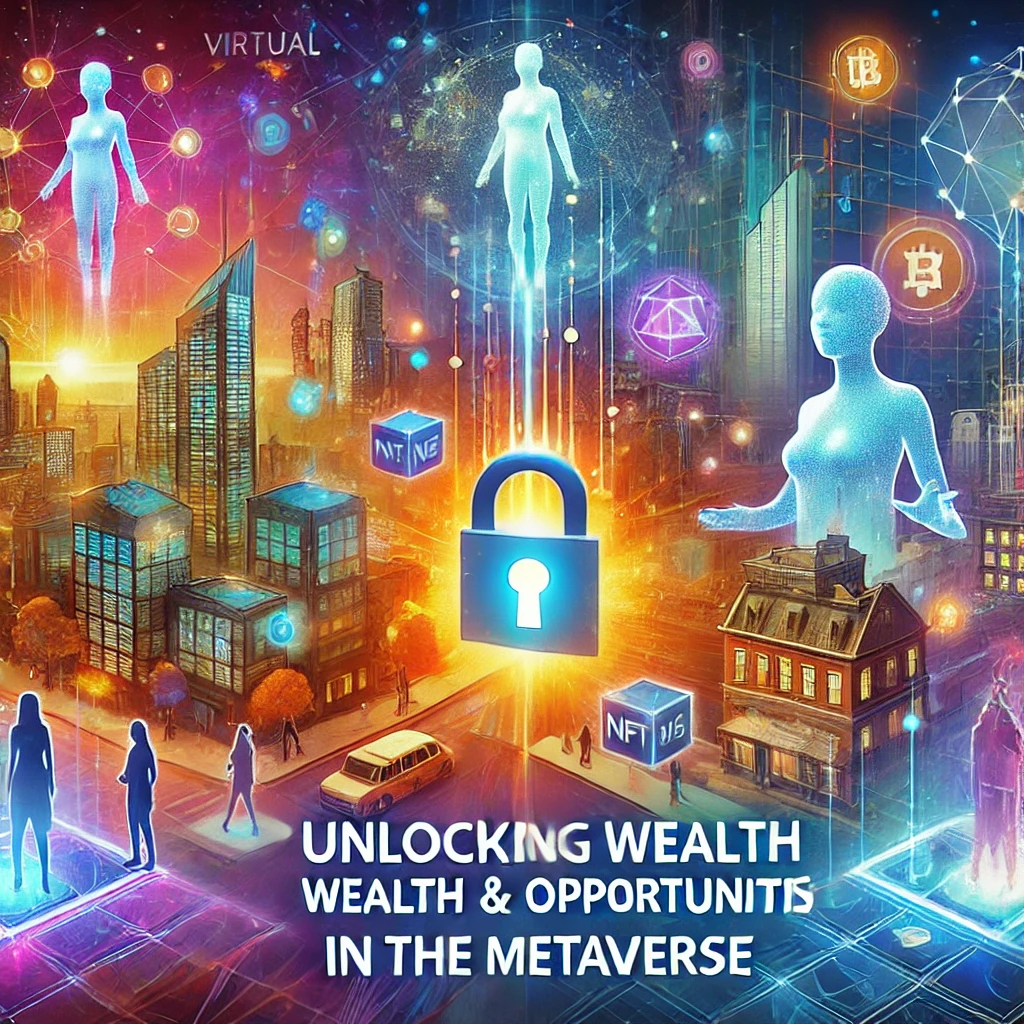The emergence of Web 3.0 technology and blockchain has brought new opportunities for gamers to earn real money while playing video games. Play-to-earn (P2E) has become one of the most popular trends in the blockchain industry. Players can earn digital assets or cryptocurrency by participating in games and completing certain tasks. In this article, we will discuss the top 10 play-to-earn webs 3 platforms that have gained popularity among gamers.
Table of Contents
1. Axie Infinity
Axie Infinity is a blockchain-based game that combines elements of gaming, collectables, and cryptocurrency. The game is played using cute, digital creatures called Axies, which can be bred, trained, and battled against other players. The game is designed to be easy to learn but difficult to master, with a strong focus on strategy and tactics.
Features:
- Players can earn rewards in the form of cryptocurrency by playing the game.
- Axies can be bred, trained, and battled against other players in a variety of game modes.
- The game has its marketplace where players can buy, sell, and trade Axies, items, and land.
- The game has its own governance system, where players can vote on proposals and make decisions about the future development of the game.
- The game is designed to be accessible to a wide audience, with a low barrier to entry and a friendly, community-driven atmosphere.
Pros:
- Axie Infinity has a large and active community of players, with over 1 million daily active users at its peak.
- The game has a strong focus on play-to-earn, which has made it popular with players looking to earn cryptocurrency.
- The game has a well-designed and engaging gameplay loop, with a variety of game modes and activities to keep players engaged.
- The game has a well-developed economy, with a thriving marketplace and a range of in-game items and assets to buy and sell.
Cons:
- The game has a relatively high barrier to entry, with players needing to purchase Axies to play the game.
- The game can be time-consuming, with players needing to spend a significant amount of time playing to earn rewards.
- The game is still relatively new, and there is some uncertainty around the long-term sustainability of the play-to-earn model.
Use Cases:
- Players can earn cryptocurrency by playing the game, which can be used to buy other cryptocurrencies or traded for fiat currency.
- Players can invest in Axies and other in-game assets, which can appreciate in value over time.
- The game can be used as a platform for socializing and building communities, with players able to connect with others from around the world.
2. Decentraland
Decentraland is a decentralized virtual world that allows users to create and monetize content in a fully immersive environment. The platform is built on the Ethereum blockchain and uses non-fungible tokens (NFTs) to represent land and other in-game assets. Users can buy, sell, and trade land and other assets using cryptocurrency, and can earn rewards through various in-game activities.
Features:
- Users can create and monetize their own content in the virtual world, including games, art, and experiences.
- The platform has its own marketplace where users can buy, sell, and trade land and other in-game assets.
- The platform uses non-fungible tokens (NFTs) to represent land and other assets, which can be bought, sold, and traded on various marketplaces.
- The platform has its own governance system, where users can vote on proposals and make decisions about the future development of the platform.
- The platform has a strong focus on user-generated content, with a wide variety of experiences and activities available to users.
Pros:
- Decentraland offers a fully immersive and customizable virtual world, which allows users to create and monetize their own content.
- The platform has a strong focus on user-generated content, which encourages creativity and collaboration among users.
- The platform has a well-developed economy, with a thriving marketplace and a range of in-game items and assets to buy and sell.
- The platform has a strong community of users, with a variety of social events and activities available to users.
Cons:
- Decentraland has a relatively high barrier to entry, with users needing to purchase land and other in-game assets to participate fully in the platform.
- The platform can be complex and time-consuming to navigate, with a steep learning curve for new users.
- The platform is still relatively new, and there is some uncertainty around the long-term sustainability of the play-to-earn model.
Use Cases:
- Users can earn cryptocurrency by creating and monetizing content in the virtual world, which can be used to buy other cryptocurrencies or traded for fiat currency.
- Users can invest in land and other in-game assets, which can appreciate in value over time.
- The platform can be used as a platform for socializing and building communities, with users able to connect with others from around the world.
3. The Sandbox
The Sandbox is a decentralized virtual world where players can create, share, and monetize their own content. It is built on the Ethereum blockchain and uses non-fungible tokens (NFTs) to represent in-game assets. The platform features a voxel-based game engine that allows players to design and build their own 3D environments and games.
Features:
- Players can design and build their own 3D environments and games using a voxel-based game engine.
- The platform features a marketplace where players can buy, sell, and trade NFTs representing in-game assets.
- The platform uses blockchain technology to ensure ownership and scarcity of in-game assets.
- The platform has a governance system where users can vote on proposals and make decisions about the future development of the platform.
- The platform has partnerships with major brands and IPs, such as Atari, Care Bears, and The Smurfs.
Pros:
- The Sandbox offers a fully immersive and customizable virtual world, which allows players to create and monetize their own content.
- The platform has a strong focus on user-generated content, which encourages creativity and collaboration among players.
- The platform has partnerships with major brands and IPs, which can attract a wider audience to the platform.
- The platform has a well-developed economy, with a thriving marketplace and a range of in-game items and assets to buy and sell.
Cons:
- The Sandbox can be complex and time-consuming to navigate, with a steep learning curve for new players.
- The platform has a relatively high barrier to entry, with players needing to purchase in-game assets to participate fully in the platform.
- The platform is still relatively new, and there is some uncertainty around the long-term sustainability of the play-to-earn model.
Use Cases:
- Players can earn cryptocurrency by creating and monetizing content in the virtual world, which can be used to buy other cryptocurrencies or traded for fiat currency.
- Players can invest in in-game assets, which can appreciate in value over time.
- The platform can be used as a platform for socializing and building communities, with players able to connect with others from around the world.
4. Gods Unchained
Gods Unchained is a blockchain-based collectible card game that has been gaining popularity as one of the top play-to-earn web 3 platforms. With its unique gameplay mechanics and the ability to earn real-world value through gameplay, Gods Unchained has become a favorite among gamers and collectors alike. In this article, we will explore the pros and cons, features, and use cases of Gods Unchained as a play-to-earn web 3 platform.
Pros:
- Unique gameplay mechanics: Unlike other collectible card games, Gods Unchained introduces the concept of “mana locking”, which means players must use their mana wisely to unlock the full potential of their cards. This adds a strategic element to the game, making it more challenging and rewarding for players.
- Play-to-earn model: Gods Unchained allows players to earn real-world value through gameplay by buying and selling in-game cards stored on the Ethereum blockchain as non-fungible tokens (NFTs). This model has made the game a popular choice among those looking to earn cryptocurrency through gaming.
- Dedicated community: Gods Unchained has a passionate and engaged community of players and collectors who actively participate in discussions and trading on the game’s marketplace.
- Active development: The Gods Unchained development team is constantly releasing new content, including card expansions and gameplay updates, ensuring that the game stays fresh and engaging.
Cons:
- Limited gameplay options: While the strategic element of mana locking adds depth to the game, it can also limit the variety of gameplay options available to players.
- High initial cost: As with most collectible card games, acquiring rare and valuable cards in Gods Unchained can be expensive, making it difficult for new players to get started.
Features:
- Marketplace: The Gods Unchained marketplace allows players to buy and sell cards using cryptocurrency, creating a secondary market for players to earn value from their gameplay.
- Tournaments: The game regularly hosts tournaments with significant prizes, providing an additional incentive for players to compete and earn rewards.
- Customizable decks: Players can build and customize their own decks using a variety of cards with different abilities and attributes.
- Single-player and multiplayer modes: The game features both single-player and multiplayer modes, allowing players to challenge the AI or compete against other players.
Use Cases:
- Gaming: As a play-to-earn web 3 platform, Gods Unchained offers a fun and engaging way for gamers to earn cryptocurrency while playing a unique and challenging collectible card game.
- Collecting: With the ability to buy and sell valuable in-game cards as NFTs, Gods Unchained offers collectors a new and exciting way to invest in digital assets.
- Trading: The secondary market created by the Gods Unchained marketplace allows for the trading of in-game cards, providing an additional opportunity for players to earn value through gameplay.
5. Splinterlands
Splinterlands is a blockchain-based collectible card game that has become popular as a play-to-earn web 3 platform. The game offers players the ability to earn rewards in the form of the platform’s native cryptocurrency, Dark Energy Crystals (DEC), and other prizes through gameplay. In this article, we will explore the pros and cons, features, and use cases of Splinterlands as a play-to-earn web 3 platform.
Pros:
- Play-to-earn model: Splinterlands allows players to earn real-world value through gameplay by winning battles and completing quests. The platform’s native cryptocurrency, DEC, can be used to purchase new cards or traded on cryptocurrency exchanges.
- Unique gameplay mechanics: The game features turn-based combat and a range of cards with different abilities and attributes, making it a challenging and rewarding experience for players.
- Large player base: With over 100,000 daily active users, Splinterlands has a strong and active community of players and collectors.
- Competitive tournaments: The game regularly hosts tournaments with significant prizes, providing an additional incentive for players to compete and earn rewards.
Cons:
- Steep learning curve: For new players, the game’s complex gameplay mechanics and card interactions can be difficult to understand.
- Expensive initial cost: As with most collectible card games, acquiring rare and valuable cards in Splinterlands can be expensive, making it difficult for new players to get started.
Features:
- Marketplace: The Splinterlands marketplace allows players to buy and sell cards using cryptocurrency, creating a secondary market for players to earn value from their gameplay.
- Guilds: The game features a guild system, allowing players to join together and compete as a team in guild battles.
- Daily quests: The game offers daily quests for players to complete, providing an additional way to earn rewards.
- Single-player and multiplayer modes: The game features both single-player and multiplayer modes, allowing players to challenge the AI or compete against other players.
Use Cases:
- Gaming: As a play-to-earn web 3 platform, Splinterlands offers a fun and engaging way for gamers to earn cryptocurrency while playing a challenging and competitive collectible card game.
- Collecting: With the ability to buy and sell valuable in-game cards as NFTs, Splinterlands offers collectors a new and exciting way to invest in digital assets.
- Trading: The secondary market created by the Splinterlands marketplace allows for the trading of in-game cards, providing an additional opportunity for players to earn value through gameplay.
6. Alien Worlds
Alien Worlds is a blockchain-based game that has gained popularity as a top play-to-earn web 3 platform. The game is set in a virtual world where players can mine resources, battle other players, and earn the platform’s native cryptocurrency, Trillium (TLM), through gameplay. In this article, we will explore the pros and cons, features, and use cases of Alien Worlds as a play-to-earn web 3 platform.
Pros:
- Play-to-earn model: Alien Worlds allows players to earn real-world value through gameplay by mining resources and completing quests. The platform’s native cryptocurrency, TLM, can be used to purchase new tools and weapons or traded on cryptocurrency exchanges.
- Engaging gameplay: The game offers a variety of activities, such as mining, battling, and completing quests, making it a fun and engaging experience for players.
- Growing community: With over 1 million daily active users, Alien Worlds has a strong and active community of players and collectors.
- Cross-chain compatibility: Alien Worlds is compatible with multiple blockchain networks, including Ethereum, Binance Smart Chain, and Wax, allowing for increased accessibility and interoperability.
Cons:
- Limited gameplay depth: Some players may find that the game’s mechanics are simplistic and lack depth, which can lead to boredom over time.
- High transaction fees: Due to the high fees associated with using the Ethereum network, some players may find it expensive to participate in certain aspects of the game, such as mining.
Features:
- Mining: The game’s core mechanic is mining, where players can extract resources from various planets and earn TLM.
- NFTs: The game features a range of NFTs, including tools, weapons, and planets, which can be used in gameplay or traded on secondary markets.
- Battle system: The game allows players to battle other players using their mining tools and weapons, with the winner earning TLM.
- Governance: The game has a decentralized governance system, allowing players to vote on important decisions that affect the game’s future.
Use Cases:
- Gaming: As a play-to-earn Web 3 platform, Alien Worlds offers a fun and engaging way for gamers to earn cryptocurrency while exploring a virtual world and completing quests.
- Collecting: With the ability to buy and sell valuable in-game NFTs as digital assets, Alien Worlds offers collectors a new and exciting way to invest in digital assets.
- Trading: The secondary market created by the Alien Worlds marketplace allows for the trading of in-game NFTs, providing an additional opportunity for players to earn value through gameplay.
7. My Neighbor Alice
My Neighbor Alice is a blockchain-based game that has gained popularity as a top play-to-earn web 3 platform. The game is set in a virtual world where players can buy, sell, and build on virtual islands, earn rewards, and participate in various activities. In this article, we will explore the pros and cons, features, and use cases of My Neighbor Alice as a play-to-earn web 3 platform.
Pros:
- Play-to-earn model: My Neighbor Alice allows players to earn real-world value through gameplay by buying and selling virtual assets, participating in activities, and completing quests. Players can earn ALICE, the platform’s native cryptocurrency, which can be traded on cryptocurrency exchanges.
- Engaging gameplay: The game offers a variety of activities, such as building and decorating virtual islands, participating in mini-games, and completing quests, making it a fun and engaging experience for players.
- Beautiful graphics: The game has stunning graphics that create an immersive experience for players.
- Cross-chain compatibility: My Neighbor Alice is compatible with multiple blockchain networks, including Ethereum, Binance Smart Chain, and Polygon, allowing for increased accessibility and interoperability.
Cons:
- Limited gameplay depth: Some players may find that the game’s mechanics are simplistic and lack depth, which can lead to boredom over time.
- High transaction fees: Due to the high fees associated with using the Ethereum network, some players may find it expensive to participate in certain aspects of the game, such as buying and selling virtual assets.
Features:
- Virtual islands: Players can buy and own virtual islands, which they can build on and decorate with various objects and structures.
- NFTs: The game features a range of NFTs, including virtual assets, which can be bought and sold on the in-game marketplace or traded on secondary markets.
- Mini-games: The game features various mini-games, in which players can participate in to earn rewards.
- Quests: The game features quests, which players can complete to earn rewards and progress through the game.
Use Cases:
- Gaming: My Neighbor Alice offers a fun and engaging way for gamers to explore a virtual world, build and decorate virtual islands, and participate in mini-games and quests while earning cryptocurrency rewards.
- Investing: With the ability to buy and sell valuable in-game NFTs as digital assets, My Neighbor Alice offers investors a new and exciting way to invest in digital assets.
- Socializing: The game also provides an opportunity for players to socialize and connect with others in a virtual world.
8. Gala Games
Gala Games is a blockchain-based gaming platform that has become popular as a top play-to-earn web 3 platform. The platform offers a variety of games, including Town Star, Fortified, and Mirandus, which allow players to earn cryptocurrency rewards by participating in gameplay and completing various activities. In this article, we will explore the pros and cons, features, and use cases of Gala Games as a play-to-earn web 3 platform.
Pros:
- Play-to-earn model: Gala Games allows players to earn cryptocurrency rewards by participating in gameplay and completing various activities. Players can earn GALA, the platform’s native cryptocurrency, which can be traded on cryptocurrency exchanges.
- Engaging gameplay: The platform offers a variety of games that provide engaging and rewarding gameplay experiences for players.
- Unique game mechanics: Each game on the platform has unique gameplay mechanics, offering players a diverse range of experiences and activities.
- Decentralized ownership: The platform is built on a decentralized blockchain network, giving players ownership over their in-game assets and ensuring transparency and fairness.
Cons:
- Limited game selection: While Gala Games offers a range of games, the platform’s game selection is relatively limited compared to other gaming platforms.
- High transaction fees: As with other blockchain-based platforms, the high transaction fees associated with using the Ethereum network can make it expensive for players to participate in certain aspects of the game, such as buying and selling virtual assets.
Features:
- Decentralized ownership: Players own their in-game assets, which are stored on a blockchain network, ensuring transparency and security.
- NFTs: The platform features a range of NFTs, including virtual assets, which can be bought and sold on the in-game marketplace or traded on secondary markets.
- Guilds: Players can join or create guilds, which provide opportunities for socialization and collaboration with other players.
- Play-to-earn activities: Each game on the platform offers various play-to-earn activities, such as completing quests, building and managing virtual communities, and participating in competitions.
Use Cases:
- Gaming: Gala Games offers a range of games that provide engaging and rewarding gameplay experiences, making it an attractive option for gamers.
- Investing: With the ability to buy and sell valuable in-game NFTs as digital assets, Gala Games offers investors a new and exciting way to invest in digital assets.
- Socializing: The platform’s guild system provides an opportunity for players to socialize and collaborate with others in a virtual environment.
9. Ember Sword
Ember Sword is an upcoming blockchain-based massively multiplayer online role-playing game (MMORPG) that is set to become one of the top play-to-earn web 3 platforms. The game is being developed by Bright Star Studios, a team of experienced game developers who have worked on games such as the Witcher series, Dying Light, and Cyberpunk 2077. In this article, we will explore the pros and cons, features, and use cases of Ember Sword as a play-to-earn web 3 platform.
Pros:
- Play-to-earn model: Ember Sword is designed with a play-to-earn model that allows players to earn cryptocurrency rewards by participating in gameplay and completing various activities.
- High-quality graphics: The game features high-quality graphics and an immersive world that promises to provide players with an engaging and visually stunning gameplay experience.
- Deep customization: Ember Sword allows players to customize their characters in a variety of ways, from equipment and abilities to appearance and playstyle.
- Player-driven economy: The game features a player-driven economy that allows players to create and sell in-game items, earning real-world cryptocurrency rewards for their efforts.
Cons:
- Upcoming release: While Ember Sword has generated a lot of excitement in the gaming community, the game is still in development and has not yet been released to the public.
- Potential for bugs and glitches: As with any new game, there is always the potential for bugs and glitches that could affect gameplay and user experience.
Features:
- Play-to-earn model: Ember Sword’s play-to-earn model allows players to earn cryptocurrency rewards by participating in gameplay and completing various activities, such as completing quests, crafting items, and participating in PvP battles.
- Player-driven economy: The game’s player-driven economy allows players to create and sell in-game items, earning real-world cryptocurrency rewards for their efforts.
- Deep customization: Players can customize their characters in a variety of ways, including equipment, abilities, appearance, and playstyle.
- Open-world exploration: Ember Sword features a vast open-world environment that players can explore, filled with hidden treasures, challenging dungeons, and exciting quests.
Use Cases:
- Gaming: Ember Sword promises to provide players with an engaging and visually stunning MMORPG experience, making it an attractive option for gamers.
- Investing: With the ability to earn real-world cryptocurrency rewards for in-game activities and create and sell in-game items, Ember Sword offers investors a new and exciting way to invest in digital assets.
- Socializing: The game’s open-world environment and player-driven economy provide opportunities for socialization and collaboration with other players.
10. Star Atlas
Star Atlas is a blockchain-based space exploration and combat game that promises to be one of the top play-to-earn web 3 platforms. Developed by the team at Star Atlas, the game offers an immersive gameplay experience set in a vast and detailed sci-fi universe. In this article, we will explore the pros and cons, features, and use cases of Star Atlas as a play-to-earn web 3 platform.
Pros:
- Play-to-earn model: Star Atlas is designed with a play-to-earn model that allows players to earn cryptocurrency rewards by participating in gameplay and completing various activities.
- Detailed and immersive universe: The game features a detailed and immersive universe that offers players a wide range of activities, from space exploration and resource gathering to ship customization and combat.
- High-quality graphics: Star Atlas features high-quality graphics and an impressive level of detail, making for a visually stunning gameplay experience.
- Player-driven economy: The game features a player-driven economy that allows players to create and sell in-game items, earning real-world cryptocurrency rewards for their efforts.
Cons:
- Complex gameplay: Star Atlas has a complex gameplay system that may be difficult for some players to understand and master.
- Potential for bugs and glitches: As with any new game, there is always the potential for bugs and glitches that could affect gameplay and user experience.
Features:
- Play-to-earn model: Star Atlas allows players to earn cryptocurrency rewards by participating in gameplay and completing various activities, such as mining resources, building ships, and engaging in combat.
- Player-driven economy: The game’s player-driven economy allows players to create and sell in-game items, earning real-world cryptocurrency rewards for their efforts.
- Immersive universe: Star Atlas features a vast and detailed sci-fi universe that offers players a range of activities, from exploration and resource gathering to combat and ship customization.
- Real-time strategy gameplay: The game features a real-time strategy gameplay system that requires players to make strategic decisions to succeed in combat and other challenges.
Use Cases:
- Gaming: Star Atlas offers players an engaging and visually stunning space exploration and combat experience, making it an attractive option for gamers.
- Investing: With the ability to earn real-world cryptocurrency rewards for in-game activities and create and sell in-game items, Star Atlas offers investors a new and exciting way to invest in digital assets.
- Socializing: The game’s detailed and immersive universe and player-driven economy provide opportunities for socialization and collaboration with other players.
Conclusion
In conclusion, the emergence of Web 3.0 has paved the way for a new era of decentralized platforms that allow users to earn real-world rewards for their participation. Play-to-earn platforms have become increasingly popular among gamers, investors, and blockchain enthusiasts alike. In this article, we have highlighted the top 10 play-to-earn Web 3.0 platforms that are leading the charge in this exciting new industry. From Axie Infinity to Decentraland, these platforms are changing the way we think about gaming, investing, and earning. As Web 3.0 continues to grow and evolve, we can expect to see even more innovative play-to-earn platforms emerge, offering new opportunities for users to earn and participate in the decentralized economy.








